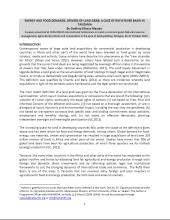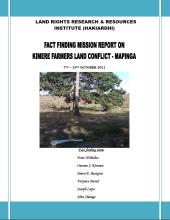Land Library Search
Welcome to the Land Portal Library. Explore our vast collection of open-access resources (over 74,000) including reports, journal articles, research papers, peer-reviewed publications, legal documents, videos and much more.
/ library resources
Showing items 1 through 9 of 37.La historia colombiana de la última mitad del siglo anterior se caracterizó por un fuerte conflicto armado en donde confluyeron múltiples fuerzas, tales como la insurgencia, el paramilitarismo, el narcotráfico y la violencia social.
La investigación rastrea el impacto del conflicto armado en los medios de vida de la población del corregimiento de Tutunendo en el municipio de Quibdó, departamento del Chocó.
Is it possible that populations living in precarious socio-economic conditions and in violent contexts, can provide a different security from that offered by the State and illegal armed actors?
This paper uses District Land and Housing Tribunal (DLHT) as a case study to argue that the principle conceived in the enactment of the law that established the tribunal is far from becoming a reality.
This article argues that there is a transformation in the relationship between land, peasant communities and its members or comuneros.
Contemporary waves of large scale land acquisitions for commercial production in developing countries in Africa and other parts of the world have been branded as ‘land grabs’ by many scholars, media and activists.
This fact finding is based on one of the claims of a group of peri-urban dwellers in Kimere, Mapinga village in Bagamoyo District, whose land they claim have been invaded by one of the well connected elite with a view to assist them register their rights only to realise later on that he was
En el presente trabajo se analizarán las transformaciones en la distribución y uso de la tierra, así como las luchas sociales que alrededor de la propiedad rural se han desarrollado en el municipio de Cajibío (Cauca, Colombia) durante el periodo 1973-2008.
El conflicto armado interno en Colombia se caracteriza por la generación de más de tres millones de desplazados internos, con consecuencias dramáticas desde el punto de vista humanitario y desde la óptica de la protección de sus derechos.




